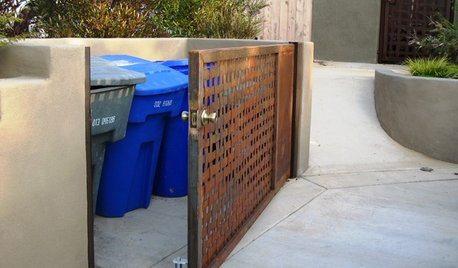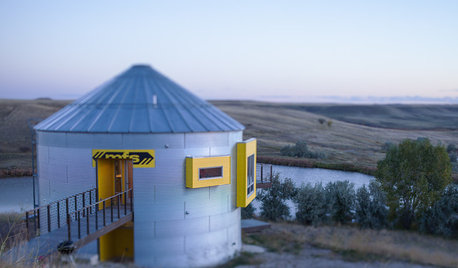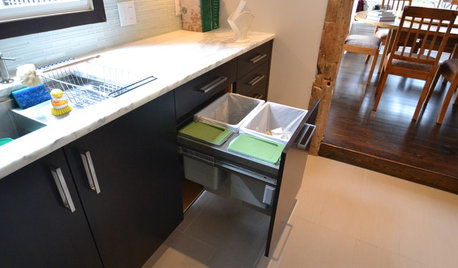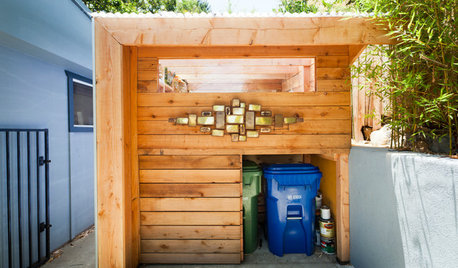I bought a compost bin...
ezzirah011
11 years ago
Related Stories

GARDENING GUIDESGet on a Composting Kick (Hello, Free Fertilizer!)
Quit shelling out for pricey substitutes that aren’t even as good. Here’s how to give your soil the best while lightening your trash load
Full Story
GARDENING GUIDESHouzz TV: Make a Worm Bin for Rich Soil and Happy Plants
A worm-powered compost bin that can fit under a sink turns food scraps into a powerful amendment for your garden. Here’s how to make one
Full Story
GARDENING AND LANDSCAPINGLet's Talk Trash Bins
No one gazes fondly on garbage cans. Keep your street cred intact and your bins under wraps with these camouflage solutions
Full Story
HOUZZ TOURSHouzz Tour: Prairie Grain Bin Turned Bucolic Retirement Home
An agrarian structure and a big dream combine in this one-of-a-kind home that celebrates 250 acres of Montana grasslands
Full Story
DECLUTTERINGTame the Toy Chaos: Bin Storage for All
New project for a new year: With bins, totes and shelves, a clutter-free playroom can be yours
Full Story
HOLIDAYSCollecting Christmas Ornaments That Speak to the Heart
Crafted by hand, bought on vacation or even dug out of the discount bin, ornaments can make for a special holiday tradition
Full Story
WINTER GARDENING6 Reasons I’m Not Looking Forward to Spring
Not kicking up your heels anticipating rushes of spring color and garden catalogs? You’re not alone
Full Story
SHOP HOUZZShop Houzz: 4 Ways to Show You Really Love Our Planet
Compost, recycle and save water and energy with these earth-loving picks
Full Story
CURB APPEALHouzz Call: How Do You Hide Your Trash?
No one wants to see those trash and recycling bins. So where do you stash them while you wait for the garbage truck? Show us your designs!
Full Story
FEEL-GOOD HOME12 Very Useful Things I've Learned From Designers
These simple ideas can make life at home more efficient and enjoyable
Full Story






MiaOKC
Lisa_H OK
Related Professionals
Maple Valley Landscape Contractors · Eureka Landscape Contractors · Fair Oaks Landscape Contractors · Melrose Landscape Contractors · New Cassel Landscape Contractors · Pikesville Landscape Contractors · Seminole Landscape Contractors · Setauket-East Setauket Landscape Contractors · Bensenville Landscape Contractors · Coatesville Decks, Patios & Outdoor Enclosures · Crestline Decks, Patios & Outdoor Enclosures · Fort Worth Decks, Patios & Outdoor Enclosures · Greeley Decks, Patios & Outdoor Enclosures · Jackson Decks, Patios & Outdoor Enclosures · Monroe Decks, Patios & Outdoor Enclosuressoonergrandmom
slowpoke_gardener
TraceyOKC
lat0403
OklaMoni
ezzirah011Original Author
OklaMoni
Okiedawn OK Zone 7
luvabasil
slowpoke_gardener
Okiedawn OK Zone 7
luvabasil
slowpoke_gardener
luvabasil
Okiedawn OK Zone 7
slowpoke_gardener
chickencoupe
luvabasil
Okiedawn OK Zone 7
ezzirah011Original Author
Pamchesbay